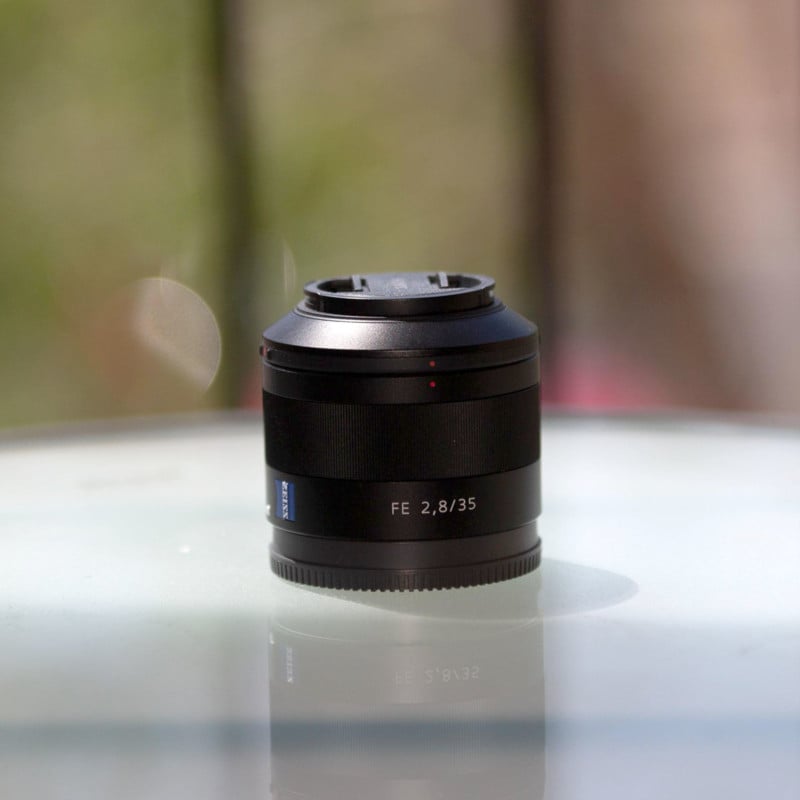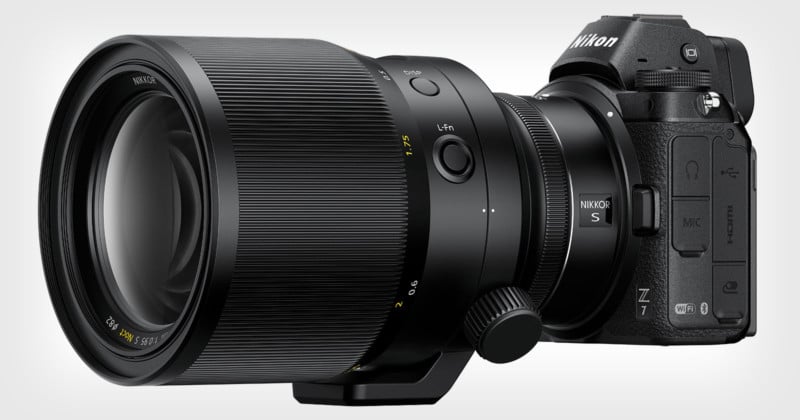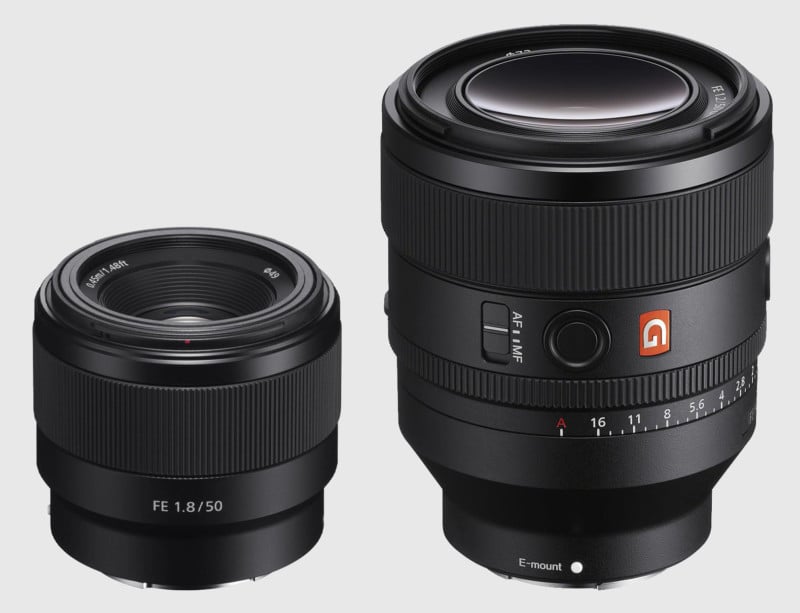![]()
In your photography adventure, you will most likely buy both a prime lens and a zoom lens at some point. If you are a beginning photographer looking to upgrade to a new lens, you are probably facing the decision of whether to choose a prime or a zoom. Which type should you get and what’s the difference?
Table of Contents
The Pros and Cons of Zoom Lenses
When I started in photography, I purchased a camera kit with a couple of zoom lenses. These starter lenses allowed me to practice with the camera and its settings. My kit came with both an 18-55mm and a 55-250mm lens.
Pro: Versatility
These zoom lenses offered a broad range to shoot with. I was able to achieve wide or close-up shots by rotating the zoom ring on the lens to get the desired frame. By design, zoom lenses allow you to take a closer or farther composition of your subject without having to walk up to or away from it. To get the desired frame of your image, you can dial in or out to fine-tune what you want in the picture.
Zoom lenses come in a variety of ranges with the 24-70mm and the 70-200mm being the most common. If you want the holy trinity of lenses, you would add an ultra-wide lens ranging from 16-35mm. Zoom lenses offer the best range for taking different types of photos as you can easily frame your shot by zooming in or out.
Being so versatile, zoom lenses are great for travel and general use. A majority of photographers you see in public use some type of zoom lens, often either a 24-70mm or a 24-105mm lens. Both are great lenses and give the best of both worlds. The 24-70mm usually has its widest aperture at f/2.8 while the 24-105mm is usually not as fast and has its widest aperture at f/4.
Remember: the wider the aperture, the shallower the depth of field. Shallow depth of fields produce blurry backgrounds that create separation between the subject and the background. Either of these can quickly become your favorite lens.
Pro: A Lighter Camera Bag
The flexibility of zoom lenses means you can carry fewer lenses in your camera bag to cover the same focal range. Instead of having to carry a 24mm, 50mm, and 85mm lens, you can just carry one 24-70mm lens (sacrificing a little reach on the telephoto end). A 24-105mm is even more versatile, giving you nearly the equivalent of adding a 105mm lens to your kit.
What’s more, zoom lenses will allow you to capture any focal length in their entire range, whereas carrying prime lenses will force you to give up the focal lengths between what your prime lenses capture.
Con: Image Quality
There are drawbacks to zoom lenses. First, they can have worse image quality, especially when considering lower-end lenses — in the world of modern professional lenses, there is minimal to no image quality gap between zooms and primes.
Zoom lenses have more complexity and moving parts, and these attributes usually come with poorer image quality when compared to the simpler design of prime lenses in the same focal range.
Con: Worse for Bokeh
Zoom lenses are also generally not as fast as primes. By fast we mean the maximum aperture is not as large, usually topping off at f/2.8. That’s not to say that you can’t obtain creamy bokeh backgrounds. It just means they are not as good as prime lenses in capturing photos with a razor-thin depth-of-field and extreme background blur compared to a prime lens with a larger maximum aperture.


Con: Worse in Low Light
When using zoom lenses with a broad range such as a 55-250mm kit lens or even a super zoom lens like the 150-600mm, you will need plenty of light to shoot with. Their apertures are usually around f/5.6-6.3. Ideally, these are great for outdoor shooting in daylight. Can you shoot in low-light environments with these lenses? Yes, you can but you may find yourself cranking up the ISO to get the right exposure.
Con: Portability
Finally, there’s the issue of portability. Zoom lenses can be quite heavy, especially with the longer ranges and premium editions.
There are large and heavy prime lenses, of course, but for equivalent quality, you may likely trade having multiple smaller and lighter lenses in favor of one larger and heavier lens when you choose a zoom over multiple primes.
The Pros and Cons of Prime Lenses
With the flexibility and range of a zoom lens, why would one want or need a prime lens? There are a few reasons to use a prime lens.
Prime lenses have a fixed focal length meaning they do not zoom in or out. To get the desired shot, you will have to physically move closer or further from your subject to frame your image. However, prime lenses do have some advantages over zoom lenses.
Pro: Larger Maximum Aperture
Most prime lenses offer wider apertures (faster) than their zoom counterparts. This allows more light to your camera making them ideal for low-light situations. Additionally, with wider apertures, you can get a shallower depth of field that produces those nice “bokeh” or blurred-out backgrounds.
Prime lenses can offer extreme apertures such as f/0.95, such as in the Nikon 58mm f/0.95 S Noct. The depth of field at these apertures is so shallow that focusing on a subject’s eye may throw their nose out of focus.


Pro: The “Nifty Fifty”
One of the more popular primes lenses is the “nifty fifty” or 50mm. Almost every camera manufacturer produces one of these inexpensive compact lenses. Additionally, there are a handful of third-party manufacturers that make them as well.
These lenses produce sharp images despite their price and lightweight design. It’s a great lens for general photography and fun to shoot with. Some may not focus as fast as their more expensive counterparts but they are still a great lens for their value.
Aside from the 50mm, the 35mm is also a popular prime lens that many photographers shoot with, particularly street photographers and photojournalists. It offers a wide enough angle to capture a subject and enough of the background to tell a story.
Pro: Specialized Purposes
Prime lenses come in many different focal lengths. Choosing one would depend on the types of photography you are interested in.
For general use, the 35mm and the 50mm are excellent choices. They offer visually appealing results with little lens distortion resulting in an image close to what the human eye would see.
For portraits, headshots, and weddings, the 85mm is a popular choice.
If you’re into landscape or astrophotography, a 12mm or a 14mm are good choices. You can even opt for an ultra-wide or fisheye lens like an 8mm.
Now these focal lengths mentioned are only examples and just about any type of lens and focal length can be used for different genres, but the results will vary.
Con: Hefty in Weight and Price
Many photographers like prime lenses because of their wide apertures and ability to produce tack-sharp images and shoot in low light. However, many higher-end prime lenses come with a hefty price tag and not to mention added weight (from having such a maximum large aperture). Don’t be surprised to find an 85mm lens weighing almost as much as a 70-200mm. Although there are some inexpensive versions of prime lenses, you may find more options in price and image quality when choosing one.
Generally, the faster the lens (wider aperture), the more expensive it will be. For example, Sony’s 50mm f/1.8 sells for about $250. The company’s premium version with an aperture of f/1.4 sells for about $2,000. There are significant differences in build quality and materials as well as the quality of the elements used in the lens. The resulting image quality between the two can be significantly noticeable to a trained eye but for the most part, they are comparable but not the same.

Deciding Between Prime and Zoom
Some camera and lens manufacturers have a higher-end line of lenses. For example, Canon indicates its luxury line of lenses with an L. These are usually higher quality materials and glass to build them and often include weather sealing. Sony uses the GM (G-Master) labeling while Sigma offers its high-end line with the A (ART) series.
These premium lines of lenses are available in both zooms and primes. If you’re thinking of purchasing premium lenses, they can be a worthwhile investment. As I’ve been told early in my photography journey, “Invest in the best glass you can afford.” This practice lets you have great glass that, with proper care, will last for years.
Even if you decide to upgrade your camera body, you will have a lens that produces great image quality. Lenses also hold their values for quite some time.
Now that you know the differences between zoom and prime lenses, which one do you get next? Unfortunately, there is no one answer. It really depends on what your specific needs are and what results you are trying to achieve. I’ve been asked that since a 24-70mm can shoot at 35mm or 50mm, wouldn’t that be the obvious choice? Not necessarily. Again, a 35mm or a 50mm prime lens can have a wider aperture that produces amazing images in low light or with a shallower depth of field.
If versatility and a lighter camera bag are important to you, you may want to consider a zoom lens. If specialization, low light performance, and bokeh are things most important to you, you may want to think about a prime.
When the time comes to purchase a new lens, be sure to do your research. Each manufacturer has different mounting options so you’ll have several choices to make. Find the right mount for your camera and look at third-party lenses as well. Some third-party lenses can actually outperform the brand-specific lens that’s offered. Some things to consider when buying your next lens:
1. How much are you willing to spend? Buy nice or buy twice!
2. What will you be using it for? Is it for specialty shots or part of your genre/interest?
3. Do you anticipate using it for other purposes? How compatible is it for different genres?
4. Do you really need it? Is it a need or a want? Have you reached the maximum potential of your current lenses?
Ask yourself these questions and be honest with your answers. Don’t buy a new lens because it’s the latest and greatest. Also, don’t fall into GAS (gear acquisition syndrome). Just because you saw someone with a lens you want shouldn’t be the driving force behind your purchase. Ask any photographer who has been shooting for a while and I’m sure they will tell you that they made many purchases in the past that they didn’t need. Some equipment is probably sitting on a shelf or in a drawer somewhere either untouched for months or barely used.
I’m not trying to discourage a purchase but from what I‘ve learned, I realized that most of the time, I could’ve pulled off the shot with one of my older lenses other than the one I took the picture with. Either way, I have no regrets because I’m still looking for my next lens. I’m just not sure if it’s going to be a prime or a zoom.
Author: Updated
Source: Petapixel



